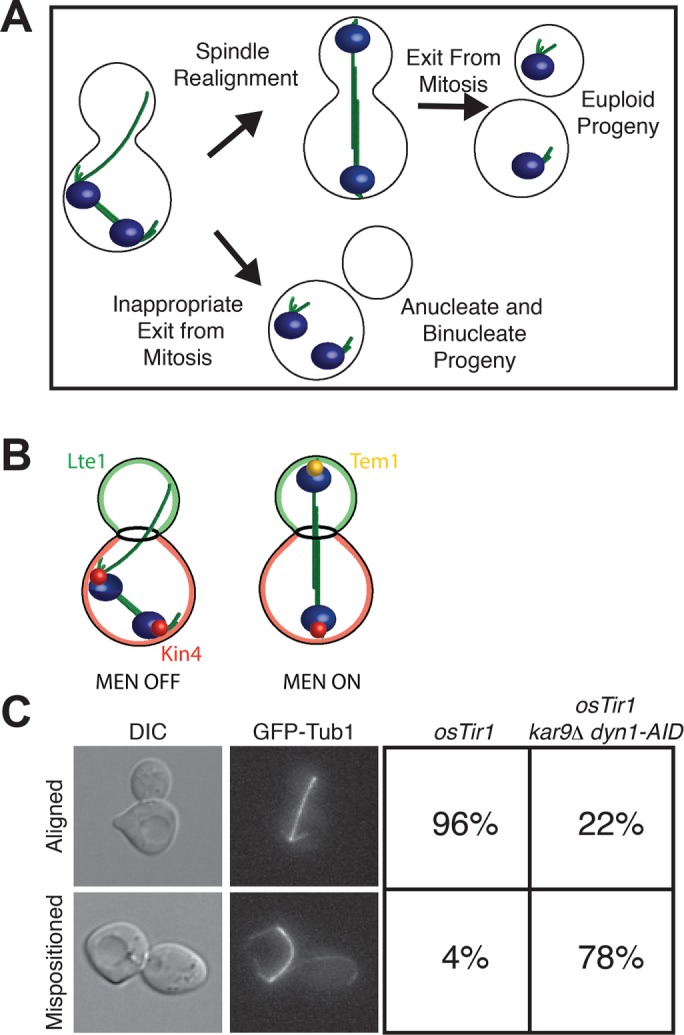FIGURE 1:

Characterization of cells with mispositioned spindles. (A) The function of the spindle position checkpoint. If the spindle becomes mispositioned in the mother cell compartment, most cells realign their spindles before exiting mitosis so that both daughter cells are euploid. A small fraction of the cells that misposition their spindles inappropriately exit from mitosis in the mother cell compartment and go on to produce one anucleate cell and one binucleate cell. The SPoC prevents cells from becoming anucleate/binucleate by arresting cells in late anaphase until the spindle has realigned along the mother–bud axis. The DNA is blue, and the spindle is green. (B) Regulation of exit from mitosis as described by the zone model. There are two zones: a mitotic exit–inhibitory zone in the mother cell compartment, and a mitotic exit–promoting zone in the bud cell compartment. If the anaphase spindle is mispositioned in the mother cell compartment, Kin4 (red) prevents Tem1 (yellow) from becoming enriched at SPBs, and the MEN cannot become active. It is only once one SPB escapes the inhibitory zone in the mother cell compartment and moves into the bud compartment where the positive regulator of the MEN Lte1 (green) resides that Tem1 can be enriched on SPBs and the MEN is activated. (C) Wild-type (A35699) or dyn1-AID kar9Δ (A35707) cells were grown in yeast extract/peptone/dextrose (YEPD) medium and arrested in G1 with 10 μg/ml α-factor. Cells were released into the cell cycle in YEPD medium and then monitored by live-cell microscopy in a Y04C flow cell. Depletion of dyn1-AID was induced in the flow cell with 100 μM auxin in YEPD medium. Cell cycle stage was assessed by spindle morphology using a GFP-tagged α-tubulin protein. Left, representative images of cells with either an aligned spindle (top) or mispositioned spindle (bottom); right, fraction of cells with aligned and mispositioned spindles in each strain (n = 100).
